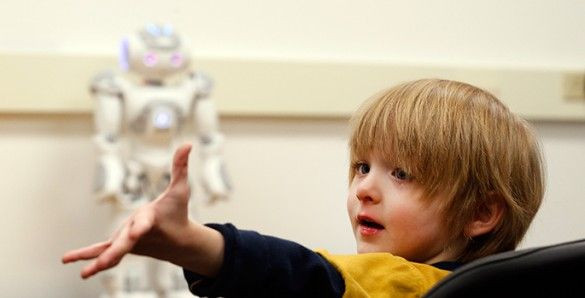New Study Says 91% Of Autism Studies Using Certain Animal Models Are Statistically Flawed

As today marks the sixth World Autism Awareness Day, families and advocates remember how research has come a long way from the genetic studies that unraveled how mutations in parents could increase risks of the disorder to recently debunking the myth that vaccinations lead to autism.
One methodical approach that has been key to autism research -- and also spans numerous other scientific fields -- is translational research. Translational research is, according to the National Cancer Institute, when researchers can translate "scientific discoveries arising from laboratory, clinical, or population studies into clinical applications to reduce cancer incidence, morbidity, and mortality."
For autism, this typically means using animal models and translating the results of the animal research into applicable solutions for preventing or curing autism in people. Seems straighforward, right? Well, one recent development may throw this method for autism research into question.
Researchers from Switzerland recently submitted an article in BioMed Central finding rthat 91 percent of animal model studies for autism are flawed.
According to the study, "there is the ever-present question of whether a particular animal model is even suitable; whether it recapitulates the disease process of interest or faithfully mimics key aspects of the human condition."
Specifically, the study's authors found flaws in studies that used animals for the valproic acid, or VPA, model, which administers VPA to induce autism in the animals. This enables scientists to study the behavioral effects of the disease by observing post-disease-induction social performance and behaviors.
But the researchers, led by Stanley Lazic from Novartis Insitutes for Biomedical Research in Switzerland and Laurent Essioux from Roche, are calling this method poorly designed and biased because it uses animals from the same litter, which are more alike than those from different litters. That means researchers are not taking into account the variation of animal subjects, ultimately leading to incorrect conclusions in they studies.
When they compare individual pups to litters, they determined that only 9 percent of the studies made valid conclusions. The other 91 percent were flawed because it looked at the individual pups and compared them to similar pups in the litter.
Although this is one study that disputes the VPA animal model, it clashes with a large number of studies that previously concluded that VPA animal models are valid and could be used to find treatment for the disorder.
A previous study that used animal models was able to identify mutations induced in mice that lead them to create amino acid supplements to correct autism symptoms in patients. This treatment couldn't have happened without first identifying the mutation in an animal.
While the findings from this recent study still have to be dissected by the outside researchers using animal models, Autism Speaks is a pre-eminent funder and supporter of training scientists for translational research and collaborative projects.
In recognition of autism, the United Nations drew their attention early intervention methods as a way to provide more opportunity for those living with the condition.
According to the Centers for Disease Control and Prevention, the number of children diagnosed with autism spectrum disorders had increased from one in 88 to one in 50. The latest statistic only adds to the intense battle to develop tools for diagnosing and preventing the spectrum disorder.



























